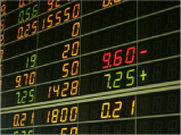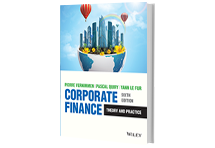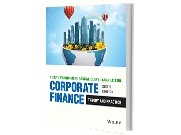Comment, question or quotation of the day
07-04-2025 : Ubisoft or squaring the circle
With negative free cash flow of €1.3bn over the last 3 years, and a share price that has plummeted 90% since its 2018 high, giving a market capitalization of €1.2bn for roughly the same amount of net bank and financial debt, Ubisoft was faced with the dilemma of finding new funds.
The dilemma was complicated by the fierce desire for independence of the founders, the Guillemots, who hold 15% of the capital and 20% of the voting rights; but without the financial means to bring in new funds, especially as part of their stake was acquired at 5 to 6 times the current price and is held via derivatives.
What's more, with Tencent now holding 49.9% of the capital of their holding company, and the latter directly holding 10% of the capital and 9% of the voting rights, the concert formed by the two parties is just below the mandatory takeover threshold of 30%. Any capital increase at Ubisoft was de facto impossible, given the Guillemots' desire to control the company. Indeed, the family, already in debt, could not participate financially. And if its ally Tencent were to take part, it would overtun the balance within the concert, leading to a compulsory takeover bid and a loss of control by the family, unable to finance it.
In the autumn, rumours circulated that the family and Tencent were considering delisting Ubisoft. This was not formally denied. Ubisoft's share price jumped 40% at the time, even though such a move seemed unlikely for 2 reasons:
1/ the Guillemots' fierce determination to retain control, which is only real as long as no one else acquires a stake greater than theirs;
2/ the absence of positive free cash flow, making it more difficult to finance a buyout.
10 days ago, a solution, necessarily baroque given the constraints, was announced. Ubisoft will spin off its 3 best games and their teams (Assassin Creed, Far Cry and Tom Clancy's Rainbow Six) into a new entity, 25% of whose capital will be open to ... Tencent, which will contribute around €1.16bn, valuing the 3 games at 4 times their sales.
This will externalize the value of the 3 best games (at twice the entreprise value of the whole Ubisoft) and totally de-leverage Ubisoft. But it dilutes shareholders' stake in the best assets, without allowing them to vote on the restructuring or participate alongside Tencent, whose position as future controlling shareholder is clearly strengthened. It also complicates the group's structure and clarity, increases the sources of conflicts of interest between shareholders, and will inevitably be accompanied by a governance/complexity discount, difficult to quantify but very real. The return of the share price to its autumn level (-24% since the announcement) is just the evidence of this.
29-03-2025 : Why are you complaining about your bank's IT?
Did you know that the European prudential regulator requires banks to deduct from their equity not only goodwill paid on acquisitions, but also the unamortized value of their software, whether purchased or developed in-house, in order to achieve the required prudential equity?
This rule has a direct impact on banks' ability to finance the economy.
But the American prudential regulator does not.
This means that when a U.S. bank acquires software for 1000, it is weighted at 100% for the calculation of prudential capital requirements, resulting in an equity requirement of around 120. By contrast, when a European bank spends the same amount, the equity it needs to raise is 1,000, i.e. 8 times more. The result? 880 less to finance economic development on this side of the Atlantic than on the other.
Far from being anecdotal, this constraint weighs heavily on European banks. For BNP Paribas, for example, this rule reduces its prudential capital by €2 billion, limiting its capacity to absorb €15 billion in weighted average risk. That's a lot of credit!
With such prudential treatment, it's hardly surprising that European banks are thinking twice before increasing their investment in software. So the next time you're grumbling, for example, that your bank doesn't yet offer you electronic signatures to validate this or that document, take solace in the fact that this avoids reducing credit to SMEs in your area.
The European banking regulator, who introduced this measure in the early 2010s in a completely different context, might think about revisiting it, now that solvency ratios have changed completely. Over-transposing Basel III in relation to the US is tantamount to shoot ourselves in the foot. The current context should make this realization easier.
In 2008, JP Morgan had a capitalization of €75 billion, while the top 10 banks in the euro zone had a combined capitalization of €510 billion. Today, JP Morgan is worth €610 billion, as much as the top 8 banks in the eurozone combined. Admittedly, the treatment of software in regulatory capital explains only a small part of this reversal, but that's no reason to maintain the status quo.


Glossary
The Vernimmen.com glossary provides definitions for a couple of thousands of financial, stock market or economic terms.
This financial dictionary allows beginners to progress in their learning of finance and to experts to cease the precise meaning of a sentence.

Quiz
The Vernimmen.com Quiz offers over 300 questions with answers to progress in your understanding of finance and to test your knowledge.
Questions are sorted by key topics (financial analysis, investment and stock markets, value, financial engineering and financial management).

Survey
We frequently ask our readers to give us their point of view on a specific topic.
You will find here the current survey with the to-date status of answers as well as past polls.

Financial data
Thanks to our partner Infinancial, we can offer on this page financial data on over 16 000 groups around the world.
Updated several times a year, this database offers information sometimes hard to find elsewhere (beta, …)
The Vernimmen.com Letter
Number 162 of January 2025
News : BRVM or Columbus's chicken and egg at the West African Stock Exchange
Statistics : Late payments in Europe in the first half of 2024
Research : A global assessment of the carbon premium
Q&A : Do free cash flows have to be distributable to be included in the DCF calculation?
COMMENTS : Comments posted on Facebook



